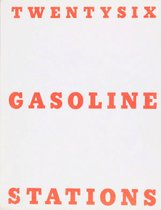Foirades/Fizzles, Jasper Johns 1976
While I was in London in June I kept a look out for any artists books or related material.
One of the most enjoyable days was spent at the British Museum exhibition The American Dream pop to present which covered the unprecedented scale, ambition and experimentation with printmaking in America during the period from the early sixties onwards
and included artists like Andy Warhol, Jasper Johns, Robert Rauschenberg, Ed Ruscha, Jim Dine and many others.
and included artists like Andy Warhol, Jasper Johns, Robert Rauschenberg, Ed Ruscha, Jim Dine and many others.
I've long been a fan of Jasper Johns' work and it was great to see his
screenprinted Flags on display in this exhibition.
screenprinted Flags on display in this exhibition.
I was particularly thrilled to see an artists book by Johns from 1976 called Foirades/Fizzles.
Johns used five texts by Samuel Beckett in the book which also contained thirty three Intaglio prints. The book is about translation between French and English, words and images, colour and shades of grey. There are stencilled words moving forwards and backwards across the page which are impossible to read but create a beautiful surface.
Unfortunately it was a traditional book format displayed in a glass case
so I could only see a one page spread.
The Picture of Dorian Gray Jim Dine
There was an illustrated book by Jim Dine from 1968 which was a script adaptation of Oscar Wilde's
The Picture of Dorian Gray and contained twelve lithographs and four loose etchings.
Two loose etchings by Jim Dine from the book
I also came across a small artist-run book art bookshop in Pitfield Street, London which sells
artists books and small press publications.
It looked really interesting with lots of Artists Books displayed in the window (behind wire security).
I saw some books there by Helen Douglas who had recently visited the State Library here in Brisbane for a lecture and workshop. I have to say that most of the books I could see on display
were flat rather than sculptural books.
The unfortunate thing was that I discovered this shop on a Sunday when I only had a few days
left in London, and the bookshop is only open on Thursday, Friday and Saturday each week.
So I didn't get to look inside and actually handle the books which was a shame
for me and for them because I am sure I would have purchased some of them.
However they do have a website with more details here.
Visiting the bookartbookshop on one of the days they are open will be on my to-do list
next time I am in London.
Elizabeth Brickell
And an unexpected surprise to see this perspex artists book by Elizabeth Brickell
displayed in a gallery in the small town of Camarthen in Wales.
displayed in a gallery in the small town of Camarthen in Wales.

















